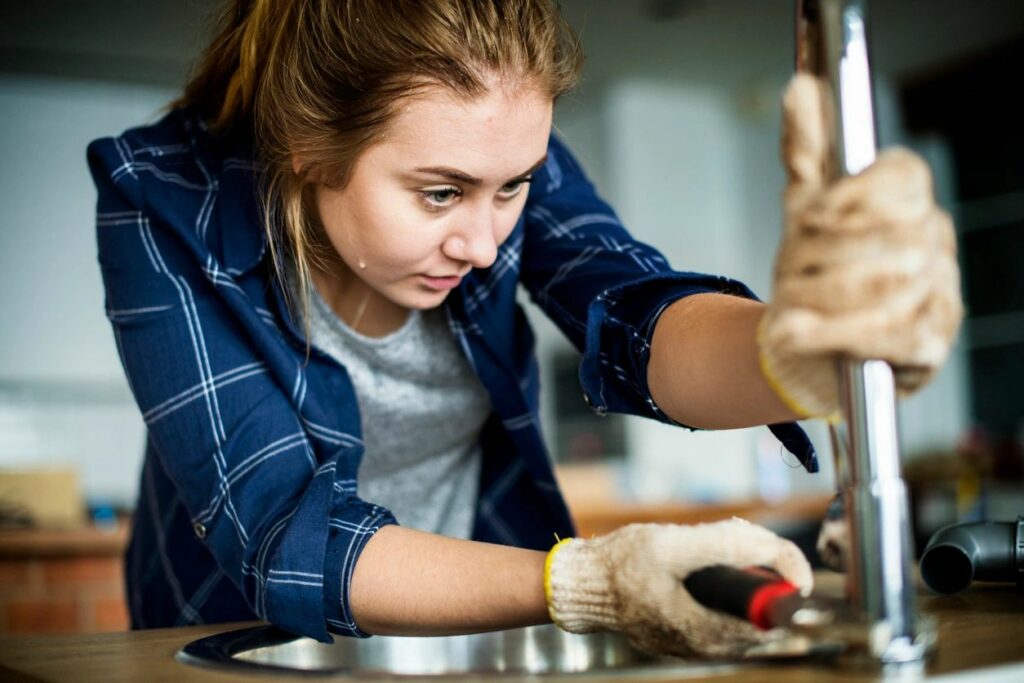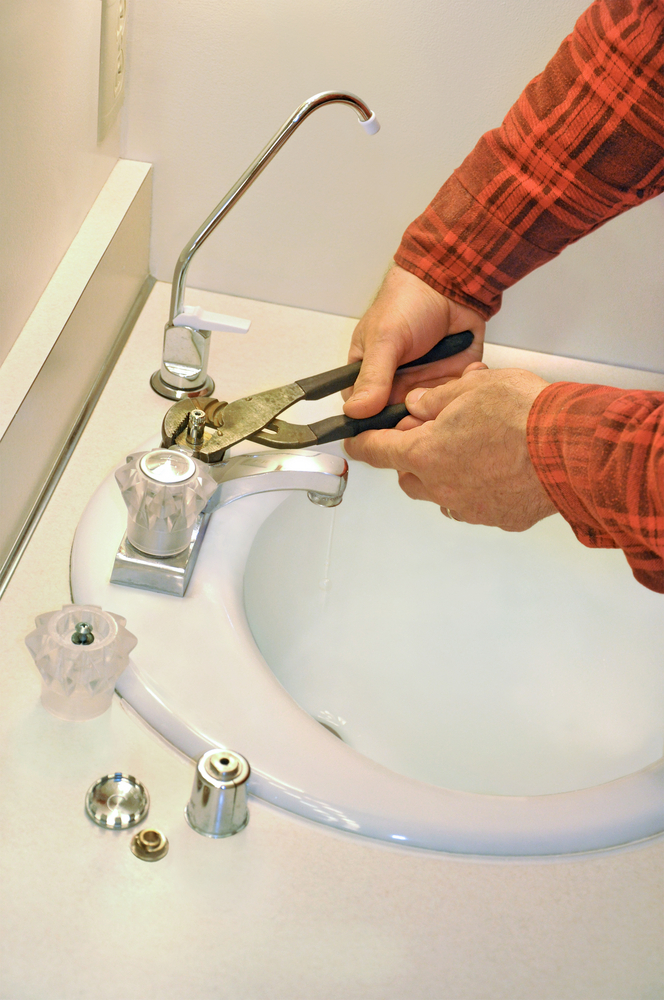We have noticed the article involving What Causes Leaky Faucets & How To Fix Them down the page on the internet and believe it made sense to quickly share it with you here.

Leaking faucets may appear like a minor trouble, but their influence exceeds simply the inconvenience of the sound. From wasting water to sustaining unnecessary monetary prices and health dangers, neglecting a trickling tap can lead to various repercussions. In this post, we'll explore why it's crucial to address this usual home problem without delay and effectively.
Wastage of Water
Ecological Influence
Leaking taps add significantly to water wastage. According to the Epa (EPA), a solitary tap dripping at one drip per second can lose more than 3,000 gallons of water annually. This not just stress water resources but likewise impacts communities and wild animals dependent on them.
Step-by-Step Guide to Dealing With a Dripping Faucet
Tools Required
Before trying to deal with a trickling tap, collect the required devices, including a flexible wrench, screwdrivers, substitute components (such as washing machines or cartridges), and plumber's tape.
Usual Tap Issues and Their Solutions
Recognize the kind of faucet and the particular concern causing the drip. Typical issues include worn-out washing machines, rusty valve seats, or defective O-rings. Describe producer directions or online tutorials for detailed support on fixings.
Financial Costs
Enhanced Water Costs
Beyond the environmental effect, trickling faucets can blow up water expenses considerably. The collected waste in time equates right into higher utility expenses, which could have been stayed clear of with prompt repairs.
Possible Residential Or Commercial Property Damages
In addition, long term leaking can cause damage to fixtures and surface areas bordering the faucet. Water accumulation can create staining, corrosion, and also structural concerns if left ignored, resulting in additional fixing prices.
Health Issues
Mold and Mildew Development
The continuous visibility of moisture from a leaking tap creates an excellent atmosphere for mold and mildew and mildew growth. These fungis not just compromise indoor air quality yet likewise present wellness dangers, particularly for individuals with respiratory problems or allergic reactions.
Waterborne Illness
Stationary water in dripping faucets can come to be a breeding place for microorganisms and other microorganisms, raising the risk of waterborne conditions. Pollutants such as Legionella germs thrive in stationary water, potentially resulting in significant ailments when ingested or breathed in.
DIY vs. Expert Repair work
Pros and Cons of DIY Repair
While some may try to take care of a leaking faucet themselves, DIY repairs come with their own collection of obstacles. Without appropriate knowledge and devices, DIY attempts can exacerbate the issue or cause incomplete repair services, lengthening the trouble.
Benefits of Working With a Specialist Plumber
Hiring an expert plumber guarantees that the underlying source of the dripping faucet is dealt with efficiently. Plumbings have the knowledge and devices to identify and fix faucet issues efficiently, saving time and lessening the risk of more damage.
Environmental Responsibility
Specific Contribution to Conservation
Taking responsibility for repairing leaking taps aligns with broader efforts towards water conservation and environmental sustainability. Every person's activities collectively make a substantial effect on protecting priceless resources.
Sustainable Living Practices
By prioritizing punctual repair work and embracing water-saving behaviors, people contribute to lasting living practices that profit both present and future generations.
Safety nets
Regular Upkeep Tips
To stop trickling faucets, carry out routine maintenance such as cleaning aerators, examining for leakages, and replacing damaged parts without delay. In addition, consider mounting water-saving tools or upgrading to extra reliable fixtures.
Significance of Prompt Repairs
Resolving dripping taps as soon as they're seen prevents more water wastefulness and possible damages, eventually saving both water and money over time.
Effect On Residential Property Worth
Assumption of Well-Maintained Residential Or Commercial Property
Preserving a residential property in good condition, consisting of resolving maintenance concerns like trickling faucets, enhances its perceived value and charm among prospective customers or lessees.
Impact on Resale Value
Features with well-maintained plumbing fixtures, including taps, command greater resale values in the realty market. Resolving trickling taps can add to a favorable impression throughout residential or commercial property assessments and arrangements.
Verdict
Dealing with a leaking faucet surpasses mere convenience; it's an essential action towards saving water, minimizing financial expenses, and guarding health and wellness and property. Whether via do it yourself repair services or professional aid, taking action to repair trickling taps is a small yet impactful means to advertise responsible stewardship of resources and contribute to a much healthier, more sustainable future.
Why Are My Faucets Dripping (And Can I Fix it Myself)?
Causes of a Dripping or Leaking Faucet
Whether you’re hearing drops of water falling and hitting a sink, or noticing water ooze out from the base of the spout, you shouldn’t ignore a dripping or leaking faucet. And, the good news is, sometimes you can fix the problem yourself.
In this article, we’ll review a few common causes of dripping and leaky. We’ll also walk you through some basic ways to find the problem and handle it without calling anyone — and let you know when to call in a pro.
But, no matter what the cause, or whether you can handle it on your own, the sooner you address it, the better.
Each drip may be a tiny amount of water. But, they all add up quickly. According to the U.S. Geological Survey, one faucet losing one drop every 20 seconds — five a minute — wastes around a liter of water every day, and 173 gallons a year.
Add in more than one in your house, and it’s a lot of water to waste. So, we’ll help you get to the bottom of things quickly.
Four Reasons Your Faucet May Be Dripping
Aerator is Damaged or Unseated Valve Seat is Corroded O Ring is Loose or Worn Out Part of the Assembly is Loose Aerator is Damaged or Unseated
If you unscrew the end of your faucet, you’ll find the aerator. It’s the little stem piece with a screen on it that shuts off the water circulation.
If it’s damaged, or if it’s not sitting right, it will allow water to pass through.
Valve Seat is Corroded
Next is the valve seat, which is connected to the washer. If the washer wasn’t in place correctly, then it could have ground against the seat. Over time, this damages the valve seat.
The problem could also be corrosion: Over time, the part has worn out, and it’s now allowing water to pass through.
O Ring is Loose or Worn Out
Since the o ring is only a small rubber gasket, it’s a common reason why the faucet is dripping. You’ll find it at the base of the faucet, and it’s there to keep water from coming out where it’s not supposed to.
However, it’s common for the o ring to wear out over time. When it does, you’ll notice a drip.
Part of the Assembly is Loose
So far, we’ve looked at a few small, specific parts. But, the problem could be anywhere in the assembly if something’s out of place.
Even if a part isn’t damaged, over time, it may have become loose or dislodged. It could be the parts we mentioned, or the aerator at the tip of the faucet, the stem itself,
Can I Fix a Leaky Faucet Myself?
Depending on the problem, and how handy you are, there’s a chance you can fix a leaky faucet without calling a professional. But, you do run the risk of making the problem worse.
If it’s a small drip, you can certainly try a few troubleshooting tactics. We’ll walk you through them in a moment.
But, no matter what, your first step should be shutting off the water coming into the faucet. You should find a shutoff valve under the sink on the pipes leading to it. Turn each one clockwise until they close tightly.
Next, make sure you have the right tools for whatever you’re attempting. It’s tempting to make do with what you have. But, you need the right ones for a reason: You’re often dealing with small parts that can break if you handle them carelessly.
If you’re feeling confident, here are some places to start.
Items Near the Tip of the Faucet
A few of the parts we mentioned — particularly the valve seat and washer — are located at the tip of the faucet where the water comes out. They’re easy to access, making it a good place to start.
Check the O Ring
To check the o ring, you’ll need to take off the spout at the base. It’s easiest on kitchen sinks with long spouts, versus the smaller, bulkier base on most bathroom sinks.
Either way, this can be tricky, so do it carefully and don’t force anything. If it’s not coming right off, you’re much better off calling in a pro than possibly breaking something.
For a kitchen sink, there’s usually a nut or coupling assembly at the base of the spout. These often slide off easily without using any tools.
Once you’ve disassembled those parts, gently but forcefully twist off the spout.
Then, you can see the o rings. There should be two of the rubber gaskets on the base. If they look worn or damaged, replace them, and see if that solves the problem.

I'm certainly very occupied with Why It's Important to Fix Leaky Faucets and I am hoping you liked our piece. If you enjoyed our blog entry plz make sure you remember to share it. I praise you for your time. Don't hesitate to check our website back soon.